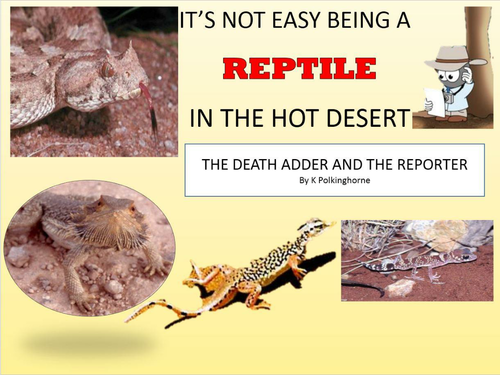

Well - it's can be very hot during the day and very cold during the night in the hot desert lands. This places extreme stresses on reptiles who must manage the environment in order to survive. By a mixture of photograph and graphics you can take students into the environment and find out how reptiles - like the snake - cope. You can also understand the stresses faced by the visiting reporter.This unit can be used at a basic level in Year 2. Two students can role play the reporter and the death adder. The graphics contain information about how reptiles adapt to hot/cold and dry deserts. The clues of adaptation can be pointed out by students approaching the whiteboard. At Year 9 level the study can be more involved and broadened by looking at information on the final 3 pages. This study can also be linked with other hot desert units such as diurnal temperature range; geckoes of the desert; the Namibian goat study; camel adaptations and Ahmed the camel herder This approach does appeal to students. Step into the scene and see how reptiles cope. The attachment test page will can check the level of student understanding.
Something went wrong, please try again later.
This resource hasn't been reviewed yet
To ensure quality for our reviews, only customers who have downloaded this resource can review it
Report this resourceto let us know if it violates our terms and conditions.
Our customer service team will review your report and will be in touch.
£0.00
